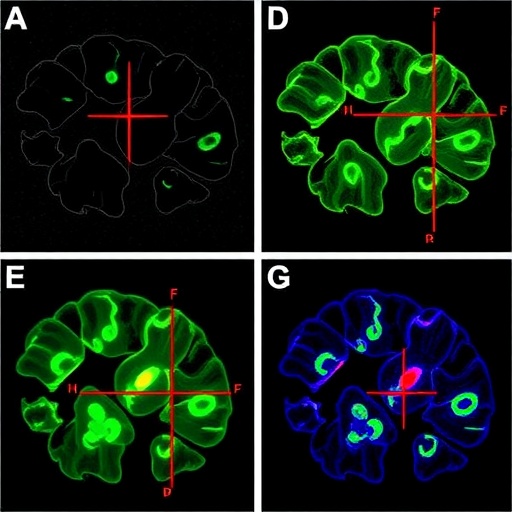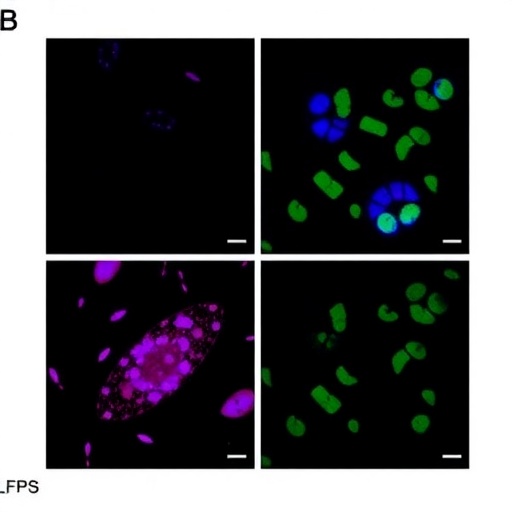
In the fascinating intersection of neuroscience and therapeutics, recent findings have illuminated the complex dynamics of synaptic activity in the brain, particularly regarding the critical role of NMDA receptors during neurological events such as status epilepticus. A groundbreaking study by De Luca, Mele, Tanqueiro, and colleagues sheds light on the intricate mechanisms underlying synaptic plasticity and hyperexcitability, shedding new light on potential therapeutic avenues for treating epilepsy and related disorders. This research, published in the Journal of Biomedical Science, spotlights how the signaling pathways of Brain-Derived Neurotrophic Factor (BDNF) and its receptor TrkB orchestrate the synaptic accumulation of GluN2B-containing NMDA receptors, which are pivotal in modulating synaptic functions.
At the core of the study is the role of BDNF, a neurotrophin critical for the survival and differentiation of neurons. BDNF signaling acts through the TrkB receptor, triggering various downstream signaling cascades that influence neuronal plasticity. This research connects the dots between BDNF-TrkB signaling and the expression of GluN2B subunit-containing NMDA receptors, proposing that these interactions play a significant role in synaptic modifications, especially during pathological conditions such as status epilepticus. The examination of these dynamics not only enhances our understanding of neural function but also opens new pathways for intervention in epilepsy management.
Status epilepticus is characterized by prolonged seizures that pose significant risks to neural integrity and function. The brain’s response during such critical events involves complex biochemical and physiological adaptations. The research team meticulously detailed the synaptic accumulation events, revealing that following BDNF activation, there is a robust increase in GluN2B-containing NMDA receptors at the synaptic sites. This accumulation is believed to be a compensatory mechanism aimed at enhancing excitatory signaling, which becomes crucial during states of increased neuronal activity.
Intriguingly, the findings demonstrate that this synaptic accumulation of GluN2B-containing NMDA receptors is not merely a passive increase but is driven by nuanced regulatory mechanisms. The team observed that the activation of TrkB leads to a cascade of intracellular events, promoting receptor trafficking toward the synapse. This targeted delivery enhances excitatory synaptic transmission, thereby potentially balancing the heightened excitability that occurs during seizures. Such insights challenge previous understandings of neuronal response mechanisms and underscore the need for further investigation into intracellular trafficking processes.
The implications of these findings are profound. By elucidating how BDNF-TrkB signaling mediates synaptic changes, the research offers a potential target for pharmacological intervention aimed at mitigating the effects of status epilepticus. If therapeutics can be designed to modulate this specific signaling pathway, there could be substantial improvements in managing seizure disorders. The interplay between neurotrophic factors and receptor dynamics could lead to novel strategies that enhance neuronal survival and synaptic resilience under pathological conditions.
Furthermore, understanding the signaling pathways influencing synaptic plasticity may have ramifications beyond epilepsy. Neurological disorders characterized by synaptic dysfunction, including Alzheimer’s disease, depression, and other neurodegenerative conditions, might benefit from targeted therapies aimed at enhancing BDNF signaling. As researchers continue to map the signaling networks involved in neurotransmission, new therapeutic opportunities for enhancing cognitive function and emotional well-being may emerge.
Another layer to the research’s significance lies in its contribution to the broader field of synaptic research. It brings to light the idea that synaptic reorganization is not simply a matter of neurophysiological reaction but is an actively regulated phenomenon influenced by neurotrophic factors. This perspective suggests that pharmacological agents targeting these growth factors might yield promising avenues in enhancing synaptic resilience across various neurological contexts.
As the research continues to unfold, future studies must focus not only on verifying these findings through additional behavioral and molecular assessments but also on probing the long-term effects of BDNF-mediated NMDA receptor dynamics. Understanding how these changes translate into functional outcomes, such as behavioral responses to seizures or cognitive tasks, will be essential in translating laboratory discoveries into clinical practice.
Moreover, collaboration between neuroscientists, pharmacologists, and clinicians will be vital in transforming insights from this and similar studies into actionable therapies. As the landscape of neuropharmacology evolves, the integration of fundamental research findings with clinical applications will be necessary in devising effective treatments for complex neurological conditions.
Finally, the research paves the way towards exploring the roles of other NMDA receptor subtypes and their contributions to synaptic plasticity. The intricate balance of excitatory and inhibitory neurotransmission maintains brain homeostasis, and further dissecting the roles of different NMDA receptor subunits in various contexts will deepen our understanding of the synaptic foundation for cognition and behavior.
In conclusion, the study by De Luca et al. lays a significant groundwork for future explorations into the dynamic interplay between neurotrophic signaling, synaptic plasticity, and the mechanisms underlying excitability in the brain. As researchers continue to unravel the complexities of synaptic function, the findings presented in this study not only offer a clearer view of the neuronal adaptations during pathological conditions but also signal hope for novel therapeutic interventions directed at enhancing brain resilience in the face of neurological challenges.
Subject of Research: Understanding the role of BDNF-TrkB signaling in synaptic plasticity and hyperexcitability during status epilepticus.
Article Title: Synaptic accumulation of GluN2B-containing NMDA receptors mediates the effects of BDNF-TrkB signalling on synaptic plasticity and in hyperexcitability during status epilepticus.
Article References:
De Luca, P., Mele, M., Tanqueiro, S. et al. Synaptic accumulation of GluN2B-containing NMDA receptors mediates the effects of BDNF-TrkB signalling on synaptic plasticity and in hyperexcitability during status epilepticus.
J Biomed Sci 32, 82 (2025). https://doi.org/10.1186/s12929-025-01164-4
Image Credits: AI Generated
DOI: 10.1186/s12929-025-01164-4
Keywords: BDNF, TrkB, NMDA receptors, synaptic plasticity, status epilepticus, hyperexcitability, neuroscience, neuropharmacology.
Tags: BDNF-TrkB signaling in epilepsybrain-derived neurotrophic factor researchGluN2B-containing NMDA receptorsJournal of Biomedical Science findingsneuroscience and therapeutics intersectionneurotrophins and neuronal survivalNMDA receptor accumulation mechanismssignaling pathways in synaptic functionstatus epilepticus and synaptic hyperexcitabilitysynaptic modifications in pathological conditionssynaptic plasticity in neurological disorderstherapeutic approaches for epilepsy




